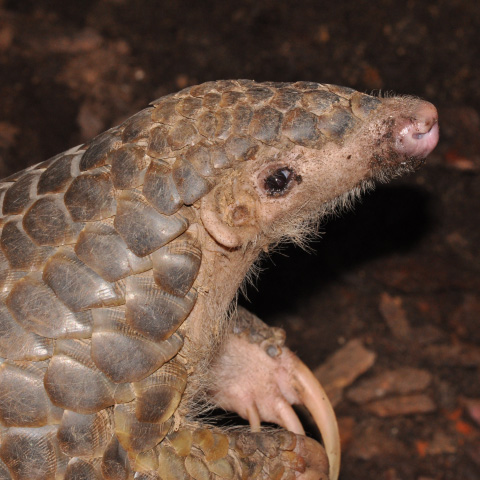Conservation Actions
This species is listed on CITES Appendix I, and is protected by Indonesian law (however, this is based on its previous taxonomic status). While a researcher initially succeeded in gaining protected status from the government for the so-called “Betumonga Research Area” in North Pagai (late 1990s), local people sold this forest to a logging company after the researchers work was concluded in 2002. Consequently P. potenziani is currently not found in any protected area; there are also no specimens in captivity. With regard to conservation actions, the following was recommended by Whittaker (2006): the protection of areas in the Pagai Islands by cooperating with a logging corporation that has practiced sustainable logging there since 1971, conservation education, especially regarding hunting, and the development of alternative economic models for the local people to reduce the likelihood of selling off their lands to logging companies.
Location Information
This species is endemic to the three southern Mentawai Islands (West Sumatra, Indonesia), Sipora, North and South Pagai, as well as the islet Sinakak off the East coast of South Pagai.
Geographic Range
Extant
Indonesia
Population Information
Based on the most recent estimate of Presbytis potenziani density from the Pagai Islands—about 1 to 4 individuals/km² (Paciulli 2004)—Whittaker (2006) estimated that probably only 300–1,200 individuals remain throughout this species' entire range. However, the animals may have adapted to hunting by becoming cryptic, causing these population estimates to be on the low end (Whittaker 2006). For instance, Fuentes (1994) reports encountering 10 groups within 1.36 km² and Sangchantr (2004) observed four groups within a 50 ha study site (both in North Pagai). This suggests an actual density higher than that observed by Paciulli (2004). Whittaker (2006) estimated a decline of ca 80% for P. potenziani (formerly P. p. potenziani) over the past 40 years.
Threats
This species is threatened mainly by hunting and commercial logging, as well as conversion to oil palm plantations, forest clearing, and product extraction by local people (Whittaker 2006). Hunting pressure has increased in recent years as a result of improved access to remote areas due to logging roads and tracks, as well as the replacement of bows and arrows with air rifles (Whittaker 2006). Furthermore, local rituals and taboos that formerly regulated hunting have been progressively eroded due to missionary and state influences. The pet trade constitutes a minor threat to this species (Whittaker 2006). It is known as the second most popular game species after the Pig-tailed Langur. The Mentawai Langur might be confronting hunting threats like its sister taxa in the Siberut Islands wherein hunters are suspected to kill langurs in their sleeping trees.





